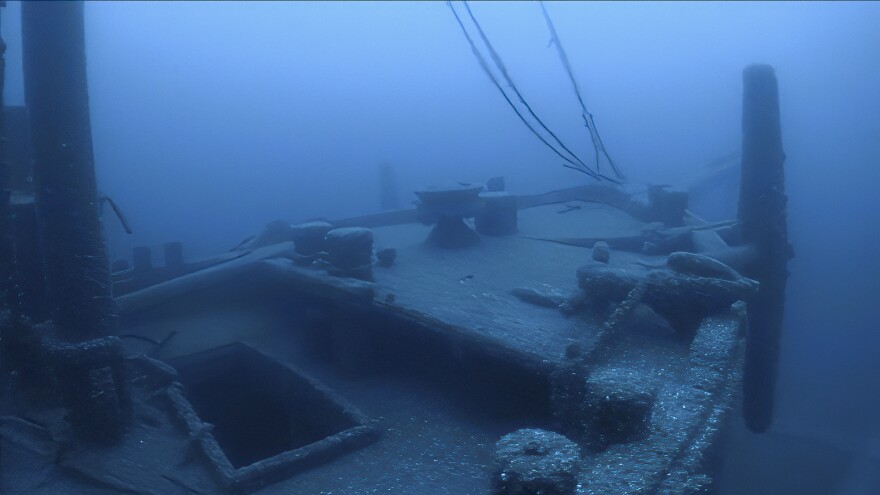In 1894, a 772-ton schooner barge, the Ironton, sank to the bottom of Lake Huron after colliding with a freighter. But it's been found, nearly 120 years later, and the University of New Hampshire’s marine robotics team had a hand in that discovery.
The Ironton, which hauled goods during the late 1800s, had been presumed lost among nearly 200 other ships at the bottom of the second largest Great Lake. Five crew members died in the wreck.
But the Center for Coastal & Ocean Mapping/Joint Hydographic Center’s marine robotics program, spearheaded by Val Schmidt, helped discover the schooner in 2019, after the National Oceanic and Atmospheric Administration asked them to join the effort.
News of the discovery became public only this winter, giving scientists at the sanctuary time to document and preserve the shipwreck.
Schmidt and his team of six researchers went out to the Thunder Bay National Marine Sanctuary – based in Alpena, Mich., where nearly 200 other sunken ships lay – in the spring and summer of 2019 to join scientists across the country in the search for the Ironton.
Schmidt remembers the moment when his collaborators from a different team found the ship.

“Their entire team had this sheepish grin on their face,” he said. “They showed us the sonar imagery of the Ironton and everybody’s jaws just dropped.”
Schmidt said the shipwreck was “wonderfully preserved.”
“The ship looks like it sailed from the surface of the water, just right down and landed,” he said. “The masts are still intact and it looks like there's still rigging on the masts.”
The university’s marine program was invited to participate in the search because of the team’s leading sonar technology, which helped map out the lake floor.
Schmidt said his program has been using a Bathymetric Explorer and Navigator – BEN, for short – since 2016, when the university first acquired the 14-foot-long boat and reprogrammed it for sonar capabilities.

While BEN is only 7 years old, it’s already been around the world: off of southern California in the vicinity of the Channel Islands for research on sea levels, to the Arctic Ocean for making nautical charts above the Bering Strait, and the American Samoa in the Pacific Ocean.
Schmidt said BEN was even invited to participate in the search expedition for Amelia Earhart’s last aircraft.
“Sadly, we didn't find any evidence of her lost aircraft, but I know the search continues,” he said.
BEN will make an appearance closer to home, and soon: Graduate students at the University of New Hampshire will use the boat to map the ocean floor off the state’s coast this summer.



